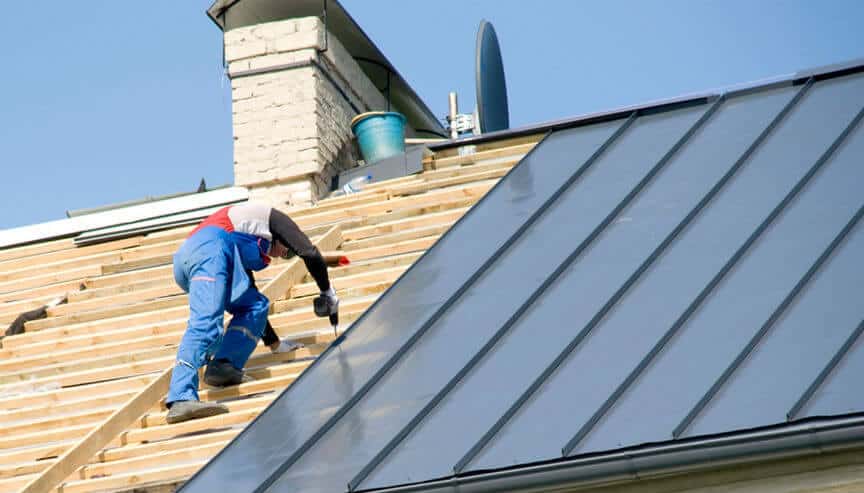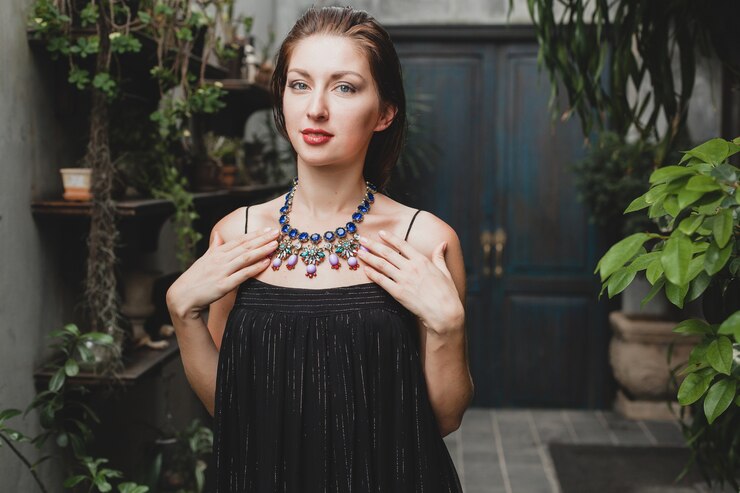
When it comes to commercial roofing it is never a good idea to use shortcuts or half measures. Although there are plenty of materials that roofers can choose to work with when they build the roof, only high-quality roofers will be sure to use the best materials, tactics, and tools to do the job in a way that ensures the maximum lifespan that the roof can possibly have.
Some of the most common types of commercial roofs are:
- Metal
- Built-up roofing (BUR) membrane
- EPDM Roofing
- Thermoplastic
- Shingle
In many cases, the climate of the area that the building is in combined with the needs of the business will be the main cause of the type of roofing that will work best in that specific situation.
Commercial Roofing vs. Residential Roofing
One might be tempted to believe that commercial roofing and residential roofing are the same things because they are both types of roofs. However, commercial buildings tend to be much larger than the average residential home. Even a very large home with two stories and 5,000 square feet of space is small when compared to a full-fledged warehouse building that is larger than two football fields put together.
Most homes are built with pitched roofs. This means that the roofer will lay shingles or hot tar on the roof that has angles with a ridge at the top. Some homes have a slight angle, and some have an intense pitch which leaves a very steep incline.
Commercial roofs do not always have to be large buildings. The buildings can be whatever fits the needs of the business. However, the majority of commercial roofs are flat. Obviously larger buildings that have flat roofs have different specifications than a residential home with a pitch.
Some of the larger commercial buildings will have flat roofs that are designed to help the flow of rainwater when it pours down so that it will not pool and flood on the roof. Any professional roofer will be able to tell how to build the roof in the appropriate way that does not lead to water damage and leakage.
Metal Roofs
One of the best things that a metal roof has to offer is that it is not combustible and will not burn in the event of a fire. In addition to safety, the metal roof will last a very long time. The cost of implementing a metal roof might be a bit more than any other type of roof, however, a metal roof can last upwards of 60 years and does not need constant maintenance. In the long run, it is more cost-effective to invest in some type of metal roofing solution.
There are many types of metal roofing solutions, one of the common ones that you may see on homes is the metal shingles. However, for the larger buildings, the most common type is the metal panels that are larger.
One of the drawbacks of metal roofs is that they can attract lightning. Although the metal will not catch fire, lightning strikes can cause a substantial amount of other damage.
Built-Up Roofing Membrane
Roofing membranes can be made out of a single ply, or several layers built on top of each other. Where a single layer is typically made up of pre-made sheets, built-up roofs are several layers.
The built-up roofing membrane method has been a part of roofing for over 100 years. Essentially it is made up of layers of asphalt (bitumen) and heavy-duty roofing fabric. Once the appropriate number of layers has been established on the roof, the top layer will be comprised of some sort of aggregate.
The built-up roof can be built with enough layers that are appropriate for the type of roof and the size of the roof. Where some roofs will only be able to use a couple of layers, others will have multiple layers that are built up to where it is compliant with the specifics of that particular building.

EPDM Roofing Membrane
EPDM stands for ethylene propylene diene monomer. This material is made out of a chemical compound that is famous for its durability and elasticity. One of the main perks that EPDM has to offer is that it has the ability to resist the powerful ultraviolet rays that the sun emits. These rays are known for causing severe damage after time. However, this type of roofing solution inhibits the damaging process of the sun and offers a longer-lasting roof that can withstand extreme weather conditions.
This type of roofing is used for buildings with very low slopes. It can come in either black or white. Some of the sheets can be up to 50 feet wide and cover a great deal of area.
The material can be applied to the roof in several different ways such as:
- Fully adhered
- Mechanically attached
- Ballasted
Some of the more common ways to attach it to the roof are to seal it with liquid adhesives or use a specially formulated type of tape.
Thermoplastic Roofing
Thermoplastic roofing also referred to as, TPO or thermoplastic polyolefin, is a commonly used material for both commercial and residential roofs. Since it is white in color it reflects the sun’s rays as opposed to absorbing them. This helps to support a cooler structure in the hot summer months.
If you have ever been on top of a building and noticed that the roof was white it is most likely because the roof was covered with a thermoplastic membrane.
Although it works well and lasts a considerable amount of time, many people do not like the way it looks because it is white and tends to get dirty easily.
Shingle Roofs
Shingle roofs are very popular in residential homes and are not so popular when it comes to commercial buildings. However, depending on the area that the building is in, and the climate that it has to survive year-round a shingle roof might be the most appropriate.
There are some commercial buildings that have a flat roof on top that is comprised of a built-up roofing membrane, then another shingle roof off to the side that surrounds the flat roof. In this case, many of the buildings are created in that fashion just for looks.
The Most Common Roofs
Although there are several commercial roof types to choose from that will vary in costs, difficulty, and of course, quality the most common ones are the metal roofs and the layered built-up membranes.
Depending on the needs of the building and the budget of the company there can be a ton of varying factors of which one would be best for the company.
Roofs and the people that install them have different characteristics depending on where in the world they are located. Since all climates are different based on where they are located, it is understandable that not all places in the world will have the same types of needs as each other.
The best way to get a great roof that will last as long as the building is to do the homework and find the most reliable roofing company out there that has been in business for a while and is regarded with a high level of reverence.


